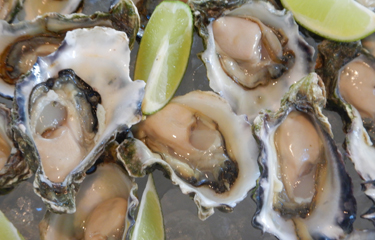Of all the categories of seafood impacted by COVID-19 – both positively and negatively – mollusks appear to have borne the brunt of foodservice closures. The sector experienced a 60 percent decline in sales during the height of the pandemic last spring.
The mollusk market has also had one of the slowest recoveries, according to NPD Supplytrack data shared during a National Fisheries Institute’s Global Seafood Market Conference webinar. SeafoodSource is providing exclusive coverage of the GSMC webinar series, which will be providing market-focused content throughout 2021.
NPD data has shown that while categories like crustaceans and freshwater fish have seen 90 to 92 percent recoveries from their initial declines, the market for mollusks remains just 77 percent of what it was before the pandemic hit.
Within the mollusk category, oysters have been hit particularly hard, according to Bill Taylor, the vice president of Shelton, Washington, U.S.A.-based Taylor Shellfish.
“Last March, as the restaurants shut down, our sales in oysters were about 25 percent of the previous year’s sales,” he said. “It was devastating to the industry all over North America. There’s just no demand.”
Those numbers hold true across the entire industry, Performance Food Group Seafood Category Manager Jaimy Sorrell said.
“On average, foodservice operators selling oysters were down about 36 percent,” she said. Of those, casual dining and bar and grill saw the biggest declines in oyster sales – likely because they don’t travel as well as other seafood.
“Either you don’t know how to shuck it, or you are unfamiliar or nervous about it," he said.
Taylor struggled as a result, at one point laying off or scaling back hours for two-thirds of its roughly 700 workers.
“We had four oyster bars in the Seattle general area, and we permanently closed one,” Taylor said.
Customers haven't seemed to trust grocery stores with oyster purchases and still prefer to get oysters at a specialty retailer like a fishmonger, Taylor said.
“In general, your regular retail stores, people don’t trust the fish counters as much as they do the specialty stores where the retailers know what they’re selling, and also they can help give instructions to help prepare the seafood,” Taylor said.
Unlike most other types of seafood, mollusks haven't been a big seller online during the pandemic, J.J. McDonnell and Co. Purchasing Manager Chris Rubino said.
“It’s difficult, especially in these days of people not wanting to have other people touch their food,” he said. “We’ve tried to encourage the grilling or baking side, but it really hasn’t taken off.”
Taylor Shellfish has seen some recovery since last year thanks to reopening export markets and government aid packages. The company pivoted in the wake of foodservice closures and was able to get people to start to bite on their direct-to-consumer online sales channels.
“We’ve done online sales for a number of years, but as sales dramatically fell last spring, we upped our effort and saw a five-fold increase in our online sales, a pretty dramatic increase,” he said. “It will be interesting to see how that continues going on into the future here as the restaurants start opening up and people have shellfish available through other means.”
Even with COVID-19 vaccines becoming more available in the U.S., the oyster industry expects to continue feeling the impacts of the pandemic for years to come. Oyster farms that couldn’t conduct harvesting due to the massive drop in demand will now have larger-sized oysters to deal with. The older oysters get, the higher the risk of mortality. Plus, those larger oysters are filling up gear that can’t be used to seed the next set of crops.
“It definitely is challenging as those oysters get larger,” Taylor said. “It just has a wide range of impacts that are difficult to manage.”
Unlike other species like clams where larger sizes can fetch higher prices, prices typically decrease for larger oysters, which are often undesirable to raw bars - buyers who typically represent the best profit margins to wholesalers like Taylor Shellfish.
The bright spot, Rubino said, is that shucked market could be an outlet for larger oysters.
“The one place that we have seen farms get a higher return is the shucked market,” he said. “On the shucked side, larger oysters catch a higher price.”
Despite the heavy impacts, the panelists had a positive outlook on the industry as the foodservice sector begins to come back online.
“I think that the more specialty oysters will definitely come back,” Taylor said. “We’ve seen inklings of strong demand in that.”
The industry, he said, is overall “fairly strong,” in part thanks to generous federal aid.
“Maybe some of the smaller players that were just in the half-shell market might fall out,” he said. “I’m not sure it will change the face of the industry as it is now. Definitely, the government funds have had a lot of help here, for the farmers I speak to here on the West Coast.”
Oyster farms are starting to prepare for a build-up of demand, a positive sign that things are turning around.
“Those that have cash on hand are going for it. [They're] buying seed, placing orders,” he said. “We have seen in the past that the raw bar is still willing to pay high prices for oysters.”
Photo courtesy of Pascal Vosicki/Shutterstock







